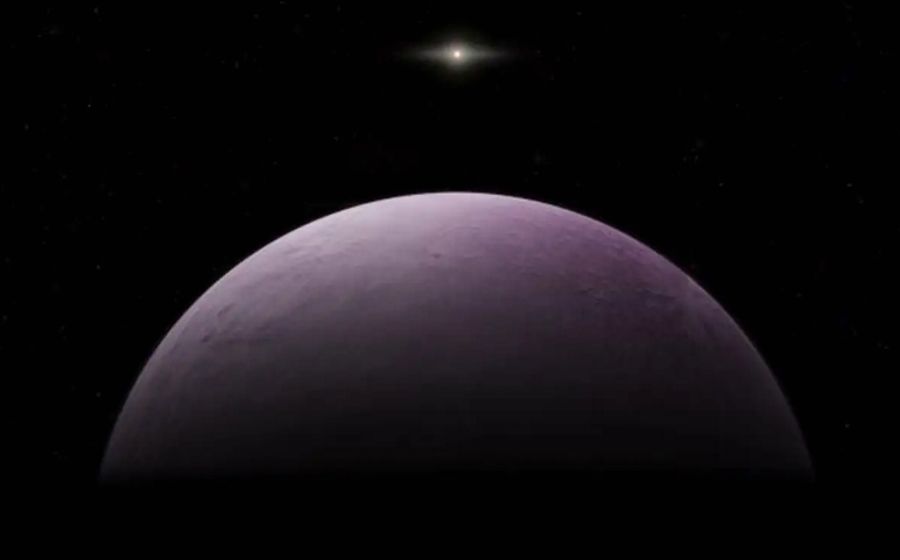A new dwarf planet has been discovered on the outskirts of the Solar System
Farout is the most distant object observed in the Solar System. The newly discovered tiny world, formally known as 2018 VG18, has a diameter of about 500 kilometers and is located 120 astronomical units away – that’s about 18 billion kilometers away.
International complexół astronomerów discovered the most distant body ever observed in our Solar System. It is the first known object in our planetary system, whichóry was detected at a distance more than 100 times farther from the Sun than the Earth.
The new object in the Solar System was formally announced by the Minor Planet Center organization under the auspices of the International Astronomical Union. The discovery was made with the help of the Japanese Subaru telescope in Hawaii by Scott S. Sheppard of the Carnegie Institution for Science, David Tholen of the University of Hawaii and Chad Trujillo of Northern Arizona University.
Farout is a dwarf planet with a diameter of about 500 kilometersów. The name Farout (far away) indicates the distant location of the object, and this is about 120 astronomical units (Astronomical Unit – 1 AU is approximately the distance between the Earth and the Sun, approx. 150 millionów kilometerów). The second most distant Solar System object observed is Eris, whichóra is located about 96 AU. Pluto is now about 34 AU, making 2018 VG18 more than three times as distant as Pluto.
2018 VG18 was discovered as part of an ongoing search for a very distant objectóIn the Solar System, including the suspected Planet X. Strange orbits of similarly distant objectsóin led the astronomerów to the hypothesis that they may be influenced by a huge planet located on the outer edges of our solar system. This yet undiscovered object has been named Planet X.
In October, the same group of researchers announced the discovery of another distant Solar System object, classified as 2015 TG387, but called Goblin by the researchers. Goblin is about 80 AU, and its orbit indicates that it is under the gravitational influence of an as yet unknown super-Earth-sized object. More on Goblin in the text: Astronomers have found a new dwarf planet at the edge of the solar system.
The existence of a ninth large planet on the edge of the solar system was first proposed by the same teamóresearch boat in 2014, when 2012 VP113 was discovered – an object called Biden, whichóry is currently located at a distance of nearly 84 AU.

Photo. Roberto Molar Candanosa/ Scott S. Sheppard/ Carnegie Institution for Science
2015 TG387 and 2012 VP113 will never get close enough to the gas giantsów in the Solar System, such as Neptune or Jupiter, to have significant gravitational interactions with them. This means that these extremely distant objects could be probes of what is happening in the outer regions of the Solar System. Teamół does not yet know the exact orbit of 2018 VG18, so they have not been able to determine whether it shows signs of the gravitational influence of the hypothetical Planet X.
If Farout’s orbit is similarly warped, it could helpóc narrow the search for the elusive planet. – Our discovery may show that the planet exists, but that has to wait until we know the orbit,” Sheppard said. – The orbit is probably more than 1,000 years old, so it will take us a while to find it – added.
– 2018 VG18 is much more distant and slower moving than any other observed Solar System object, it will take several years to fully determine its orbit. But it was found in a similar place in the sky to other known extreme objectóin the Solar System, suggesting that it may have the same type of orbit as most of the. Orbital similarities shown by many known small, distant objectsóin the Solar System were the catalyst for our initial finding that there was a distant, massive planet at a distance in the hundreds of AU – explained Sheppard.
Currently, however, we don’t know much about Farout, due to its extreme distance. – All we currently know about 2018 VG18 is its extreme distance from the Sun, its approximate diameter and color. In images obtained by the Farout telescope, it has róchewy color, which may indicate an icy surface.
